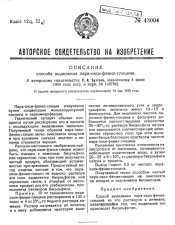bnxvs
Member
I propose to share data on the properties of substances, incl. the values of the constants of acidity and basicity. This data is difficult to find in one place on the Internet.
Here are some of the data I'm using ... comments and corrections will be grateful if there are any inaccuracies:
Name -- pKa/pKb -- Mw (g/M)
Hydroquinone -- pka=10.35 -- 110,11
Borax decahydrate -- pkb=4.76 -- 381,43
Potassium sulphite -- pkb=6.81 -- 158,26
Boric acid -- pka1=9.24 pka2=12.74 pka3=13.8 -- 61,83
TEA (triethanolamine) -- pKb=6.24 -- 149,19
Cathehol -- pka=5.18 -- 110,11
Na3PO4 (trisodium phosphate) -- pka=12 -- 163,94
4-Hydroxyphenylglycine (glycine-photo) -- pka1=1.74 pka2=8.57 -- 167,16
K2CO3 (potassium carbonate) -- pkb=3.68 -- 138,205
Here are some of the data I'm using ... comments and corrections will be grateful if there are any inaccuracies:
Name -- pKa/pKb -- Mw (g/M)
Hydroquinone -- pka=10.35 -- 110,11
Borax decahydrate -- pkb=4.76 -- 381,43
Potassium sulphite -- pkb=6.81 -- 158,26
Boric acid -- pka1=9.24 pka2=12.74 pka3=13.8 -- 61,83
TEA (triethanolamine) -- pKb=6.24 -- 149,19
Cathehol -- pka=5.18 -- 110,11
Na3PO4 (trisodium phosphate) -- pka=12 -- 163,94
4-Hydroxyphenylglycine (glycine-photo) -- pka1=1.74 pka2=8.57 -- 167,16
K2CO3 (potassium carbonate) -- pkb=3.68 -- 138,205












